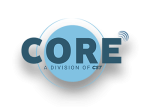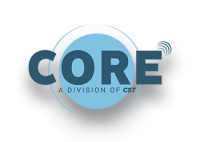A distributed antenna system, or DAS, is a network of antennas, cables and radio equipment installed inside (and sometimes outside) a venue that provides an enormous improvement in the quality of the wireless cellular services inside that venue.
In its extremely basic form, a DAS has two primary components:
- Signal Source – because a DAS does not generate a cellular signal itself, it must be fed a signal from the wireless carrier, which is typically an on-site BTS (Base Transceiver Station) or a Small Cell.
- Distribution System – the cellular signal from the signal source is amplified, distributed, and rebroadcast throughout the venue using fiber optic cables, ethernet cables, coaxial cables, or a combination of these, finally reaching numerous antennas spread throughout the venue.

Signal Sources
A BTS (sometimes referred to as an eNodeB) is the fundamental radio equipment commonly used at outdoor cell phone towers to generate the cellular signal. The BTS is connected to the primary or “core” network of a wireless service provider by fiber optic cables. A very large venue may have multiple BTSs feeding a DAS. This type signal source is more robust than small cells, providing both more power and capacity. Also, each wireless carrier (e.g. AT&T, Verizon, T-Mobile) will each have a separate BTS feeding the DAS. A wireless system that is purpose-built to work with all current and future wireless carriers is commonly referred to as a “Neutral Host” system.
Small cells (sometimes referred to as femtocells, picocells, nanocells or metrocells) connect to the carrier’s core network over a standard yet robust Internet connection. Small cells provide a high-quality wireless signal, but are typically only used in smaller venues due to their somewhat limited power and capacity, and are not easily scalable.
Distribution Systems
In this scenario, the signal source is amplified at the DAS headend – the primary equipment at the “head end” or beginning point of the DAS – and then distributed throughout the venue through a series of splitters, couplers and coaxial cables to the individual antennas. This scenario is more affordable as it leaves the RF (radio frequency) signal in its original analog form, but can only cover a somewhat limited area due to the natural attenuation or losses of the RF signal in the coaxial cables.
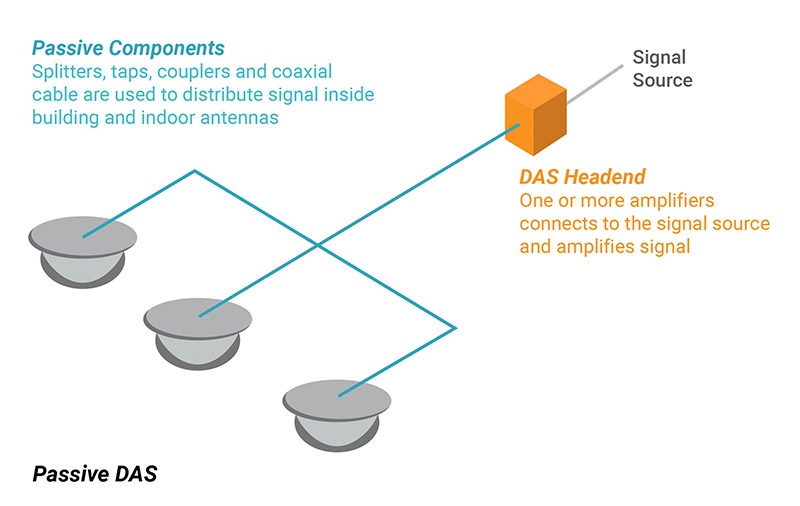
In an active DAS, the headend may combine multiple signal sources (usually from multiple carriers), converts them into digital signals, and then distributes those signals throughout the venue by either ethernet or fiber optic cables. These cables terminate at RRUs (remote radio units) or “nodes” which convert the digital signal back into analog RF signals. Depending on the manufacturer of the DAS equipment, the RF signals are then transmitted through the antennas attached directly to the RRUs (often referred to as “fiber-to-the-node”) or may be distributed through short runs of coax from the RRUs to the antennas.
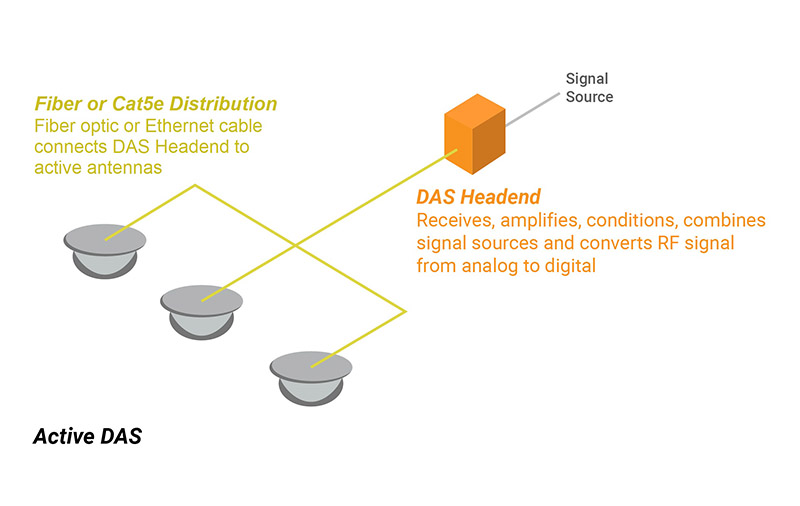
Hybrid DAS
This configuration combines elements of both the passive and the active DAS. By using a network of both fiber optic cables and coaxial cables, the RRUs are separated from the antennas, and the number of remote units is reduced which reduces the overall cost of the system. A hybrid DAS is far more robust than a passive DAS, but less expensive than an active DAS. Simultaneously, this setup allows the DAS to cover large venues and is easily scalable. Additional portions of the venue can even be added at future dates.
In a hybrid DAS, the headend combines multiple signal sources, converts them into digital signals, and distributes those signals throughout the venue by fiber optic cables to the RRUs, which in this case are spread much further apart than in an active DAS. The RRUs convert the digital signal back into analog RF signals which are then distributed in a particular defined portion of the venue through a series of splitters, couplers, combiners and coaxial cables to the individual antennas. One RRU may feed the antennas for one or two floors of a building, or some other defined area of a venue.
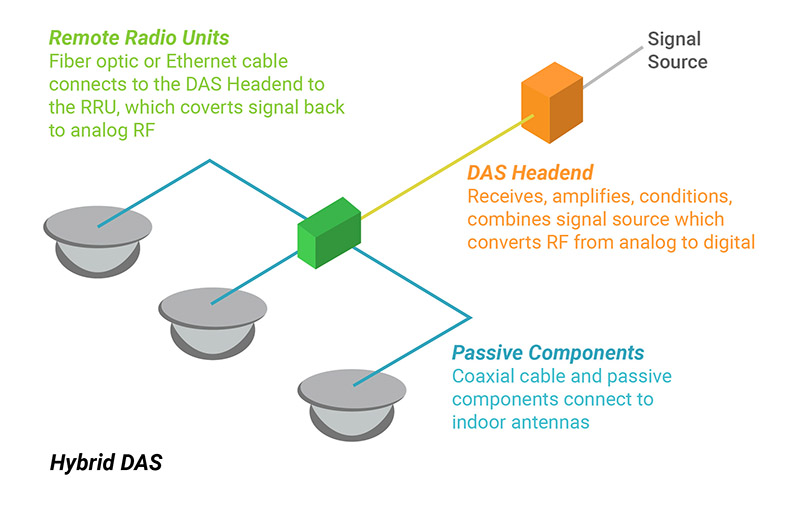
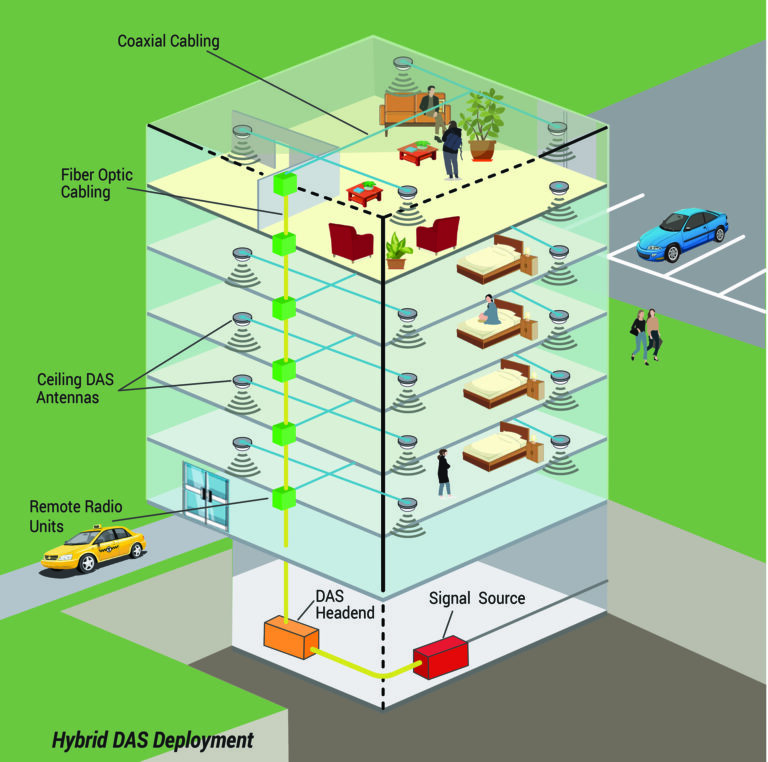
It is worth noting, there are alternative low-end systems, sometimes referred to as a repeaters, BDAs (bi-directional amplifiers) or “off-air” DAS, that simply take a nearby outdoor cellular signal and retransmit it inside the venue. These are inexpensive, temporary band-aids for coverage issues, but often create other detrimental problems such as interference, and they cannot do anything to resolve capacity issues. Wireless carriers must approve the use of these systems, and often do not give such approval due to the likely interference and capacity issues.
